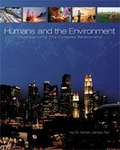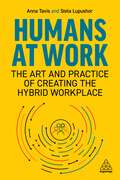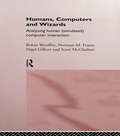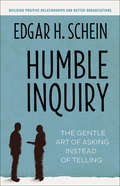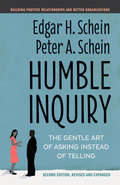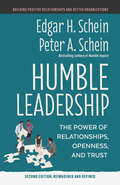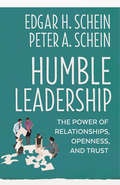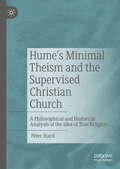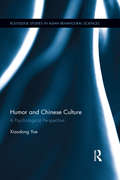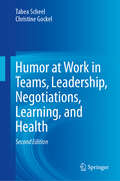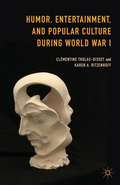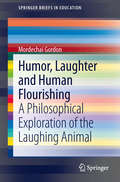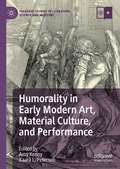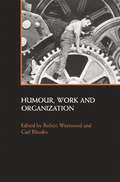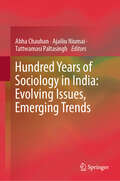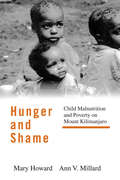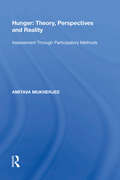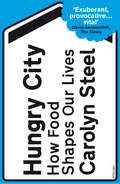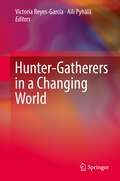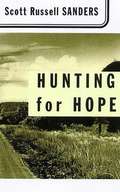- Table View
- List View
Humans and the Environment: Understanding This Complex Relationship
by Adrian James TanThis introduction to sociology examines the complex relationship between humans and the environment and how this relationship changes over time, with technology as the catalyst.
Humans at Work: The Art and Practice of Creating the Hybrid Workplace
by Anna Tavis Stela LupushorIs your organization strategically prepared for the digital and distributed workplace?Technology, data analytics and artificial intelligence already impact how people work and engage with organizations. A dispersed workforce, greater transparency, social change, generational shift and value chain disruptions are driving new behaviors and expectations from the workplace. Together, these trends are shaping a new era of distributed and digitally enabled network of workers where the work comes to workers instead of the workers going to work. In Humans at Work, employee and workplace experience experts Anna Tavis and Stela Lupushor advocate for the adoption of human-centric practices as a critical and necessary part of adapting work and workplaces to the future of work. Outlining the four factors (digitization of work, distributed workplaces, organizational redesign and changing workforce) driving the dramatic changes in the workplace, each chapter provides examples of how innovative companies are building workplace infrastructure and reshaping norms, serving new markets and adopting new technologies. Filled with examples from both start-ups and established companies, Humans at Work is the workplace leader's guide to building a workplace that creates market value by making work more human.
Humans, Computers and Wizards: Human (Simulated) Computer Interaction
by Nigel Gilbert Robin Wooffitt Norman Fraser Scott McGlashanUsing data taken from a major European Union funded project on speech understanding, the SunDial project, this book considers current perspectives on human computer interaction and argues for the value of an approach taken from sociology which is based on conversation analysis.
Humble Inquiry
by Edgar H. ScheinThe Key to Effective Communication Communication is essential in a healthy organization. But all too often when we interact with people--especially those who report to us--we simply tell them what we think they need to know. This shuts them down. To generate bold new ideas, to avoid disastrous mistakes, to develop agility and flexibility, we need to practice Humble Inquiry. Ed Schein defines Humble Inquiry as "the fine art of drawing someone out, of asking questions to which you do not know the answer, of building a relationship based on curiosity and interest in the other person." In this seminal work, Schein contrasts Humble Inquiry with other kinds of inquiry, shows the benefits Humble Inquiry provides in many different settings, and offers advice on overcoming the cultural, organizational, and psychological barriers that keep us from practicing it.
Humble Inquiry, 3rd Edition: The Gentle Art of Asking Instead of Telling
by Edgar H. Schein Peter A. ScheinThe global bestseller with over 300,000 copies sold returns in its 3rd edition to continue teaching people how to effectively ask and obtain accurate answers to questions across all mediums.With 30% new material, including how to apply humble inquiry while working remotely, this updated edition is the definitive book on bringing humility back into your life.In an increasingly divisive era where communication is often dominated by assertiveness and directive leadership, this bestselling guide offers a refreshing and essential perspective on the power of asking instead of telling. This updated 3rd edition offers practical advice for how to build relationships based on curiosity and foster collaboration and trust between team members.Lessons in this book will help you:•Build healthy relationships with people from different occupational, professional, and national cultures•Create psychologically safe work climates that allow people to feel safe to share what they know•Foster teamwork and bust hyper-competitiveness through open communication, trust, and coordinationIn this new edition, updates have been made to 30% of the book that delves into the fresh challenges inherent in today's workplace, including new stories and case examples as well as an entire additional chapter with a focus on humble inquiry in the context of remote and hybrid work.
Humble Inquiry, Second Edition: The Gentle Art of Asking Instead of Telling
by Edgar H. Schein Peter A. ScheinThis worldwide bestseller offers simple guidance for building the kind of open and trusting relatonships vital for tackling global systemic challenges and developing adaptive, innovative organizations—over 200,000 copies sold and translated into seventeen languages!We live, say Edgar and Peter Schein, in a culture of "tell." All too often we tell others what we think they need to know or should do. But whether we are leading or following, what matters most is we get to the truth. We have to develop a commitment to sharing vital facts and identifying faulty assumptions—it can mean the difference between success and failure. This is why we need Humble Inquiry more than ever. The Scheins define Humble Inquiry as "the gentle art of drawing someone out, of asking questions to which you do not know the answer, of building relationships based on curiosity and interest in the other person." It was inspired by Edgar's twenty years of work in high-hazard industries and the health-care system, where honest communication can literally mean the difference between life and death.In this new edition the authors look at how Humble Inquiry differs from other kinds of inquiry, offer examples of it in action, and show how to overcome the barriers that keep us telling when we should be asking. This edition offers a deepening and broadening of this concept, seeing it as not just a way of posing questions but an entire attitude that includes better listening, better responding to what others are trying to tell us, and better revealing of ourselves. Packed with case examples and a full chapter of exercises and simulations, this is a major contribution to how we see human conversational dynamics and relationships, presented in a compact, personal, and eminently practical way.
Humble Leadership, Second Edition: The Power of Relationships, Openness, and Trust
by Edgar H. Schein Peter A. ScheinDiscover a more agile, democratic, and effective model of leadership, from legendary business scholar Edgar Schein and Silicon Valley executive Peter Schein.Legendary organizational scholar Edgar Schein and former Silicon Valley executive Peter Schein say leadership today requires that people transcend their hierarchical roles and relate to each other as human beings-what they call humble leadership. In such relationships new ideas can flow freely, mistakes can come to light immediately, and course corrections can be made in real time rather than by committee or by order of the lone heroic CEO.This second edition includes three new chapters. Chapter 1 zeros-in on the Schein's actionable definition of leadership-relative to management and administration-focused on leading people toward new and better. Chapter 2 introduces the concept of situational humility-leaders now need to shift between several types of relationships to deal with the accelerating complexity of a supply-constrained, quiet-quitting, and two-days-in-the-office world. And Chapter 5 explains how to create a culture of humble leadership. Illustrated with examples from healthcare, government, the military, tech, and more, this is a compact, accessible guide to a leadership paradigm far better suited to a world that demands fast, nimble response to change, and a workplace hungry for mutual respect and trust.
Humble Leadership: The Power of Relationships, Openness, and Trust
by Edgar H. Schein Peter A. ScheinThe Future of LeadershipLeadership is a relationship—but that relationship must change, say legendary organizational scholar Edgar Schein and former Silicon Valley executive Peter Schein. The vertical hierarchy, with its emphasis on formal, transactional relationships, professional distance, and all guidance coming from the top, is hopelessly inflexible and outdated. In a complex world, leadership must rely on high levels of trust and openness throughout the organization, and that can be achieved only by what they call personization and Level 2 relationships, which build the agility to make course corrections quickly. This book shows how such humble leadership has built effective cultures in a whole range of sectors: health care, government, the military, tech and innovation, and more.
Hume's Minimal Theism and the Supervised Christian Church: A Philosophical and Historical Analysis of the Idea of True Religion
by Péter HartlIn this book, Péter Hartl offers a novel and comprehensive interpretation of David Hume’s philosophy of religion focusing on various notions of ‘true religion’ in Hume’s overall philosophy and how these ideas relate to various early modern positions on religion, society and philosophy. The account consists of both critical and positive parts of Hume’s overall, nuanced position on theoretical, social and political aspects of religion and the philosophical criticism of religion. Hartl criticises the atheist and completely negative readings of Hume’s philosophy of religion. Instead of presenting Hume’s position as either a radical secularist or closet atheist, Hartl’s interpretation builds on the underdeveloped, positive and constructive parts of Hume’s account of (true) religion. For Hume, on the one hand, true religion is compatible with or even vindicates minimal theism, and it forms part of philosophy exemplifying intellectual virtues. On the other hand, Hume has a pragmatic stance on the role of religion in society, according to which the government should control religious institutions to reduce the power of church authorities but to retain some positive social effects of religion.
Hume’s Moral Philosophy and Contemporary Psychology (Routledge Studies in Eighteenth-Century Philosophy)
by Rico Vitz Philip A. ReedRecent work at the intersection of moral philosophy and the philosophy of psychology has dealt mostly with Aristotelian virtue ethics. The dearth of scholarship that engages with Hume’s moral philosophy, however, is both noticeable and peculiar. Hume's Moral Philosophy and Contemporary Psychology demonstrates how Hume’s moral philosophy comports with recent work from the empirical sciences and moral psychology. It shows how contemporary work in virtue ethics has much stronger similarities to the metaphysically thin conception of human nature that Hume developed, rather than the metaphysically thick conception of human nature that Aristotle espoused. It also reveals how contemporary work in moral motivation and moral epistemology has strong affinities with themes in Hume’s sympathetic sentimentalism.
Humor and Chinese Culture: A Psychological Perspective (Routledge Studies in Asian Behavioural Sciences)
by Xiaodong YueThis book addresses psychological studies of humour in Chinese societies. It starts by reviewing how the concept of humour evolves in Chinese history, and how it is perceived by Confucianism, Taoism, and Buddhism respectively. It then compares differences in the Western and the Chinese perceptions of humor and discusses empirical studies that were conducted to examine such differences. It also discusses the cultural origin and empirical evidence of the Chinese ambivalence about humor and presents empirical findings that illustrate its existence. Having done these, it proceeds to discuss psychological studies that examine how humour is related to various demographic, dispositional variables as well as how humour is related to creativity in Chinese societies. It also discusses how humour is related to emotional expressions and mental health in Chinese society as well. It concludes with a discussion on how workplace humor is reflected and developed in Chinese contexts. Taken together, this book attempts to bring together the theoretical propositions, empirical studies, and cultural analyses of humor in Chinese societies.
Humor at Work in Teams, Leadership, Negotiations, Learning, and Health
by Tabea Scheel Christine GockelThis 2nd edition provides a comprehensive, updated review of current knowledge on the adaptive and maladaptive functions of humor. Humor is a pervasive aspect of daily interaction - including in the workplace. Affiliative, self-enhancing, self-deprecating and aggressive humor can all occur at work and have unique and sometimes ambiguous effects. This volume presents research on humor in five important workplace domains: teams, leadership, negotiation, learning, and health. It combines and integrates research from a range of fields, including work and organizational psychology, social psychology, communication, linguistics and sociology. By highlighting research gaps and proposing future research questions, the book provides a solid foundation for further research on humor in the aforementioned areas. For practitioners, the book offers tailored recommendations for each domain.
Humor, Entertainment, and Popular Culture during World War I
by Karen A. Ritzenhoff Clémentine Tholas-DissetHumor and entertainment were vital to the war effort during World War I. While entertainment provided relief to soldiers in the trenches, it also built up support for the war effort on the home front. This book looks at transnational war culture by examining seemingly light-hearted discourses on the Great War.
Humor, Laughter and Human Flourishing: A Philosophical Exploration of the Laughing Animal
by Mordechai GordonThis book is a philosophical investigation of the significance of humor and laughter, examining its relation to other human phenomena including truth, nihilism, dreams, friendship, intimacy, aesthetic experience, self-transcendence and education. The author addresses the relative neglect of humor and laughter among philosophers of education with this volume, where the focus is on the significance of humor and laughter for human flourishing. Central questions are threaded through this work: What does the study of humor and laughter bring to philosophy and specifically to philosophy of education? How is humorist thinking different from other modes of human knowing? What might happen if we were to respond to the absurdity of human existence with humor and laughter? What insights can be learned from a philosophical investigation of humor in relationship to other human phenomena such as dreams, friendship, intimacy, aesthetic experience and self-transcendence? And, finally, how can humor and laughter enhance human existence and flourishing? The author presents groundbreaking insights into what can be gained from a study of humor and laughter about human existence in general and flourishing in particular. This work will be of interest to philosophers, especially philosophers of education, as well as to teachers and educators. Its unique blend of philosophical investigation and humorous discourse is both a rigorous and accessible analysis of humor.
Humorality in Early Modern Art, Material Culture, and Performance (Palgrave Studies in Literature, Science and Medicine)
by Kaara L. Peterson Amy KennyHumorality in Early Modern Art, Material Culture, and Performance seeks to address the representation of the humors from non-traditional, abstract, and materialist perspectives, considering the humorality of everyday objects, activities, and performance within the early modern period. To uncover how humoralism shapes textual, material, and aesthetic encounters for contemporary subjects in a broader sense than previous studies have pursued, the project brings together three principal areas of investigation: how the humoral body was evoked and embodied within the space of the early modern stage; how the materiality of an object can be understood as constructed within humoral discourse; and how individuals’ activities and pursuits can connote specific practices informed by humoralism. Across the book, contributors explore how diverse media and cultural practices are informed by humoralism. As a whole, the collection investigates alternative humoralities in order to illuminate both early modern works of art as well as the cultural moments of their production.
Humour, Work and Organization
by Robert Westwood Carl RhodesAccessible and amusing in style, Humour, Work and Organization explores the critical, subversive and ambivalent character of humour, work and comedy as it relates to organizations and organized work. It examines the various individual, organizational, social and cultural means through which humour is represented, deployed, developed, used and understood. Considering the relationship between humour and organization in a nuanced and radical way and this book takes the view that humour and comedy are pervasive and highly meaningful aspects of human experience. The richness and complexity of this relationship is examined across three related domains. They are: how humour is constructed, enacted and responded to in organizational settings how organizations and work are represented comedically in various types of popular culture media how humour is used in organizations where there is a more explicit relationship between the comedic and work. An exciting and controversial text, Humour, Work and Organization will appeal to students of all levels as well as anyone interested the full complexities of human interactions in the workplace.
Hundegestütztes Coaching und Training: Effizient, wirkungsvoll und nachhaltig
by Manuela LentzschHunde bieten für Menschen als lebende, denkende und fühlende Lebewesen im Coaching und Training viele Mehrwehrte. Manuela Lentzsch erläutert in diesem Buch, warum gerade Hunde so wunderbare Co-Trainer sind und welche verschiedenen Rollen und Funktionen sie dabei einnehmen können.Das Buch zeigt neben den Grundlagen und den Wirkungsweisen von hundegestütztem Coaching und Training vor allem die Einsatzmöglichkeiten sowie Praxisbeispiele und konkrete Interventionen zur praktischen Anwendung auf. Die tiergestützten Übungen sind nach Persönlichkeits-, Führungskräfte- und Teamentwicklung unterteilt. Ein besonderes Augenmerk legt die Autorin neben dem klientenzentrierten auf einen tierzentrierten Ansatz, welcher dem Wohlbefinden des Hundes Rechnung trägt. Wichtige Aspekte der Qualitätssicherung sowie Auswahlkriterien beim Hund und tierschutzrelevante Gesichtspunkte werden daher in diesem Werk ebenfalls beleuchtet. Das Buch bietet einen fundierten Leitfaden für Menschen, die mehr überhundegestütztes Coaching und Training erfahren wollen.Die ZielgruppenCoaches, Trainern und Hundeerziehern eröffnet das Buch ein spannendes zusätzliches Geschäftsfeld und zeigt deren Wirksamkeit, Grenzen sowie Einsatzmöglichkeiten auf. Führungskräfte erfahren, welche Kompetenzen sie durch hundegestütztes Coaching und Training effizienter, wirksamer und nachhaltiger bei sich selbst, oder in ihrem Team stärken können. Hundehalter erhalten zudem Anregungen für die eigene Persönlichkeitsentwicklung mit ihrem Hund und können von einer verbesserten Mensch-Hund-Beziehung profitieren.
Hundred Years of Sociology in India: Evolving Issues, Emerging Trends
by Abha Chauhan Ajailiu Niumai Tattwamasi PaltasinghThis book examines the history of sociology in India. It delves into the origin, growth, and development of Sociology. It traces its trajectory alongside the nation's social, cultural, and intellectual landscape. The chapters examine the diverse strands of sociological thought, the evolving issues, and emerging trends across different regions and domains of Indian society. The chapters cover topics, such as the debates of colonialism and nationalism to the contemporary challenges of liberalization, globalization, and climate change. It engages with pressing issues from digital sociology, environmental movements, agrarian issues, political sociology, Dalit movement, indigenizing sociology, gerontology, and migration to gender studies and sustainable development from both theoretical and empirical perspectives. With its rich discussions, the book provides a key read for academics, students, policymakers as well as researchers in areas such as sociology, anthropology, gender studies, and development study.
Hunger and Shame: Child Malnutrition and Poverty on Mount Kilimanjaro
by Mary Howard Ann V. MillardIn discussing the moral and practical dilemmas posed by the malnourished children in Mount Kilimanjaro, the authors explore the shame associated with child hunger in relation to social organization, colonial history and global economy.
Hunger: Assessment Through Participatory Methods (King's Soas Studies In Development Geography)
by Amitava MukherjeeHunger is an issue which has been subject to much rigorous intellectual examination by economists, philosophers, sociologists, NGOs and governments. This volume provides a critical overview of current academic and political perspectives and then compares these views from thenon-hungry people with those of thehungry particularly from a broad range of poor communities in India. Their views are gathered using participatory rural appraisal techniques and the scale of the material presented is unprecedented. Not surprisingly, the comparisons show that the perceptions of the hungry are fundamentally different from those of the non-hungry. It makes compelling suggestions about how best policy makers can attempt to eliminate hunger based on what the hungry themselves suggest. The book also draws attention to the critical role of Common Property Resources and women in the fight against under-nutrition, which have so far been largely ignored.
Hungry City: How Food Shapes Our Lives
by Carolyn Steel'Cities cover just 2% of the world’s surface, but consume 75% of the world’s resources’.The relationship between food and cities is fundamental to our everyday lives. Food shapes cities and through them it moulds us - along with the countryside that feeds us. Yet few of us are conscious of the process and we rarely stop to wonder how food reaches our plates. Hungry City examines the way in which modern food production has damaged the balance of human existence, and reveals that we have yet to resolve a centuries-old dilemma - one which holds the key to a host of current problems, from obesity and the inexorable rise of the supermarkets, to the destruction of the natural world.Original, inspiring and written with infectious enthusiasm and belief, Hungry City illuminates an issue that is fundamental to us all.
Hunter-gatherers in a Changing World
by Victoria Reyes-García Aili PyhäläThis book compiles a collection of case studies analysing drivers of and responses to change amongst contemporary hunter-gatherers. Contemporary hunter-gatherers’ livelihoods are examined from perspectives ranging from historical legacy to environmental change, and from changes in national economic, political and legal systems to more broad-scale and universal notions of globalization and acculturation. Far from the commonly held romantic view that hunter-gatherers continue to exist as isolated populations living a traditional lifestyle in harmony with the environment, contemporary hunter-gatherers – like many rural communities around the world - face a number of relatively new ecological and social challenges to which they are pressed to adapt. Contemporary hunter-gatherer societies are increasingly and rapidly being affected by Global Changes, related both to biophysical Earth systems (i.e., changes in climate, biodiversity and natural resources, and water availability), and to social systems (i.e. demographic transitions, sedentarisation, integration into the market economy, and all the socio-cultural change that these and other factors trigger).Chapter 10 of this book is open access under a CC BY 4.0 license.
Hunters and Bureaucrats: Power, Knowledge, and Aboriginal-State Relations in the Southwest Yukon
by Paul Nadasdy<p>Based on three years of ethnographic research in the Yukon, this book examines contemporary efforts to restructure the relationship between aboriginal peoples and the state in Canada. Although it is widely held that land claims and co-management--two of the most visible and celebrated elements of this restructuring--will help reverse centuries of inequity, this book challenges this conventional wisdom, arguing that land claims and co-management may be less empowering for First Nation peoples than is often supposed. The book examines the complex relationship between the people of Kluane First Nation, the land and animals, and the state. It shows that Kluane human-animal relations are at least partially incompatible with Euro-Canadian notions of "property" and "knowledge." Yet, these concepts form the conceptual basis for land claims and co-management, respectively. As a result, these processes necessarily end up taking for granted--and so helping to reproduce--existing power relations. First Nation peoples' participation in land claim negotiations and co-management have forced them--at least in some contexts--to adopt Euro-Canadian perspectives toward the land and animals. They have been forced to develop bureaucratic infrastructures for interfacing with the state, and they have had to become bureaucrats themselves, learning to speak and act in uncharacteristic ways. Thus, land claims and co-management have helped undermine the very way of life they are supposed to be protecting. <p>This book speaks to critical issues in contemporary anthropology, First Nations law, and resource management. It moves beyond conventional models of colonialism, in which the state is treated as a monolithic entity, and instead explores how "state power" is reproduced through everyday bureaucratic practices--including struggles over the production and use of knowledge. The book will be of interest to anthropologists and others studying the nature of aboriginal-state relations in Canada and elsewhere, as well as those interested in developing an "ethnography of the state."</p>
Hunting Booger Bottom: Life Lessons from the Field
by Mike Schoby Michael Waddell“Michael [Waddell] is the real McCoy. Down to earth, clever, genuine, well-grounded, funny as all hell, kind, generous, decent, and surely one of the best natural hunters and woodsmen that I have ever grilled a sacred backstrap with.” —Ted Nugent From hunting legend Michael Waddell, star of multiple Outdoor Channel programs, comes a poignant and funny book about growing up in rural Georgia: Hunting Booger Bottom. Waddell offers priceless anecdotes from his lifetime of hunting with the fascinating—and often hilarious—cast of characters he’s met along the way. Breathtaking and dramatic, filled with practical advice and indelible folk wisdom—and a foreword by Ted Nugent—Hunting Booger Bottom offers an impassioned defense of sport hunting and is a must-read for anyone who has ever wandered the woods with “a stick and a string” (as Waddell refers to his bow.)
Hunting for Hope: A Father's Journeys
by Scott Russell SandersIn a narrative threaded with the moving story of his father-son trip, Sanders sets out to accumulate his own reasons for hope. These richly examined medicine bundles of hope, Scott Russell Sanders brings all of his considerable powers as an elegant writer of prose.
